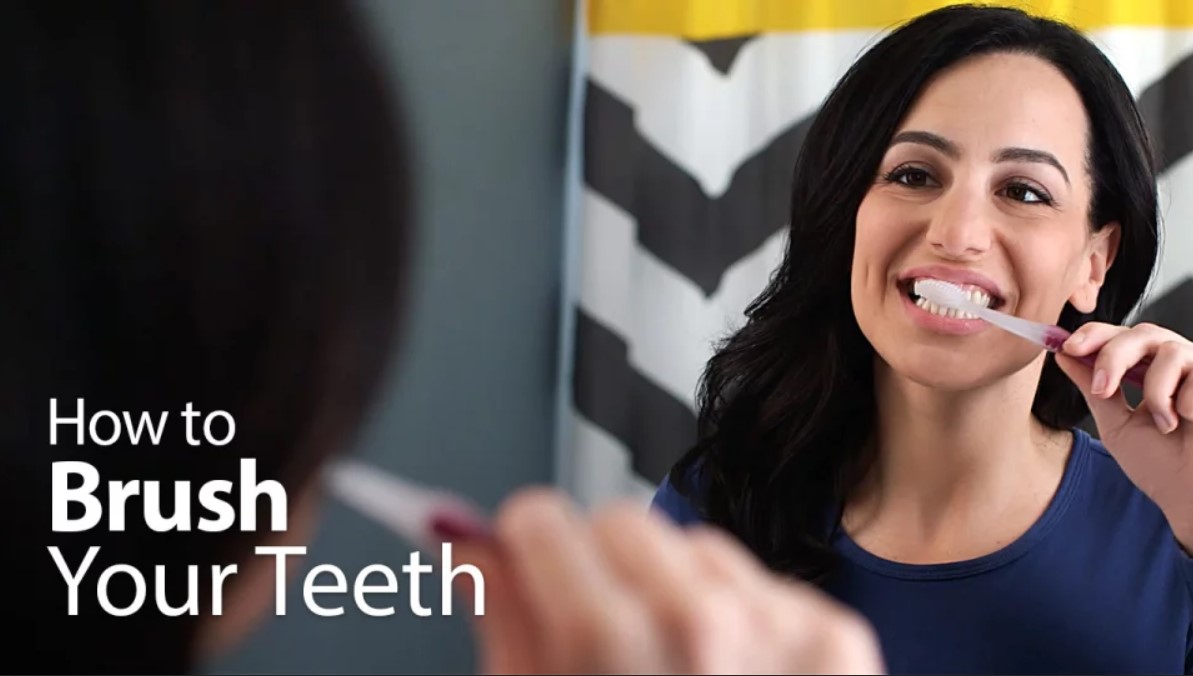How to Brush Your Teeth?

Brushing your teeth regularly is your first line of defense against harmful bacteria that cause bad breath, tooth decay, gum diseases, and tooth fall out.
Brushing your teeth at least twice a day will also help you evade conditions such as bowel syndrome, oral cancer, stomach ulcers, pregnancy issues, and diabetes.
Unfortunately, as simple as it may seem, not everyone brushes their teeth correctly.
Here are a few basics to help you learn how to brush your teeth properly;
Get the right tools.
A toothbrush and toothpaste containing fluoride are enough to start you off.
But should you want to kill the bacteria that remain after you’ve brushed, an antibacterial mouth rinse will do an excellent job.
Brushing Tips
Go for a toothbrush with soft, flexible bristles as they are comfortable against the soft gum holding your teeth. Some brushes that are labeled soft are not as flexible as you would expect. You can seek your dentist’s advice if you are not sure what type of brush to buy.
Replace your toothbrush every 3 to 4 months. The frayed bristles can attack and cause your gum to recede or bleed.
Use toothpaste that has fluoride. The fluoride mineral becomes part covering of your tooth’s enamel which helps strengthen the teeth and reverse any microscopic cavities that are beginning to form. However, the fluoride you choose should also not cause harm, especially if you share it with kids. Look for toothpaste certified by the American Dentists Association as they’re adept at fortifying the teeth without any safety concerns.
Choose the best technique
Once you’ve applied the toothpaste onto your brush’s bristle, any of these techniques will guarantee a competent clean.
The whole process should not exceed two minutes:
-
Moving your brush in circles
Moving your brush in circles while angling the bristles at 45 degrees is your perfect method for getting an agile, concentric clean.
Even better, this method takes a lot of effort and will slow you down, hence eliminating rush. Small circular motions also ensure the enamel doesn’t chip off when brushing as it helps minimize pressure.
It may look daunting, but with time and practice, you’ll realize that this technique has an excellent learning curve.
-
Sweeping motion
This is your best method when in a hurry. Once you’ve inserted the brush head in the mouth, use either upward, downward, or horizontal sweeping motions to clean all the grime and lurking plaque.
-
Side-by-side motions
This technique is a perfect alternative to the small circular motions and is one of the most popular. Insert the brush inside the mouth and begin brushing one side of the jaw, both up and lower jaws. Turn the brush upside down and capture the insides of the teeth. Once done, focus on the other side of the jaw.
Whatever technique you choose, make sure to:
- Capture the outside surfaces of your teeth, the chewing edges, and upper parts of molars and premolars
- Brush the inside part of the front teeth, molars, and premolars.
- Brush your tongue to remove the lurking bacteria that form white films on the taste buds.
- Brush softly, not vigorously
Finish with a mouth rinse
Dentists recommend rinsing at least twice every month with an antibacterial mouth rinse to eliminate breeding bacteria in the mouth. Once you’re done brushing, spit the remnants of saliva, toothpaste, and dirt, then rinse the mouth with clean water. Finish with a mouth rinse to give your mouth a fresh minty breath.
Bottom line
If you follow these steps to the latter and brush twice a day, keeping white teeth and fresh breath will never be your worry. Also, visit us at Springvale Dental Clinic, and our dentist will address any of your dental concerns.
Visit our Video Gallery.
